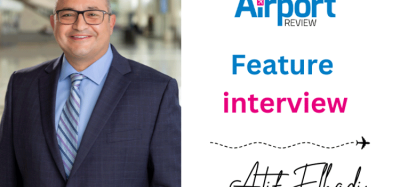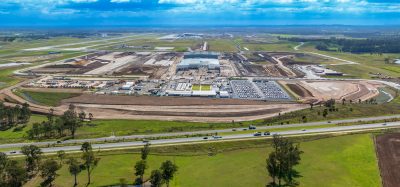ASTM Friction Standards Efforts 2009
- Like
- Digg
- Del
- Tumblr
- VKontakte
- Buffer
- Love This
- Odnoklassniki
- Meneame
- Blogger
- Amazon
- Yahoo Mail
- Gmail
- AOL
- Newsvine
- HackerNews
- Evernote
- MySpace
- Mail.ru
- Viadeo
- Line
- Comments
- Yummly
- SMS
- Viber
- Telegram
- Subscribe
- Skype
- Facebook Messenger
- Kakao
- LiveJournal
- Yammer
- Edgar
- Fintel
- Mix
- Instapaper
- Copy Link
Posted: 22 February 2010 | Frank Holt, Chairman, ASTM Committee E17 Vehicle Pavement Systems | No comments yet
ASTM International is one of the largest voluntary standards development organisations in the world. It is a trusted source for technical standards for materials, products, systems and services. Known for their high technical quality and market relevancy, ASTM International standards have an important role in the information infrastructure that guides design, manufacturing and trade in the global economy.
ASTM International is one of the largest voluntary standards development organisations in the world. It is a trusted source for technical standards for materials, products, systems and services. Known for their high technical quality and market relevancy, ASTM International standards have an important role in the information infrastructure that guides design, manufacturing and trade in the global economy.
ASTM Committee E17 on Vehicle-Pavement Systems, who will be celebrating their 50th Anniversary in 2010, was formed in 1960 to bring together many of the worlds experts in friction and develop standards for data collection, equipment design and data analysis. The Committee’s scope of work includes ‘The stimulation of research dissemination of knowledge and development of principles, techniques and standards for Pavement Management Technologies, Vehicle Pavement Interactions, and Intelligent Vehicle/Highway Systems.’
The Committee, with a current membership of 178, has 11 technical subcommittees that have jurisdiction of over 40 standards, published in the Annual Book of ASTM Standards, Volume 4.03.
One of the key areas of concern during the past decade has been the standardisation of friction testing equipment and procedures. Early efforts developed standard tyres for all of the friction equipment currently used at airports around the world. Most manufacturers have adopted these standard tyres for their equipment, thus providing a standard reference for the measurements. Both the Federal Aviation Administration (FAA) and the International Civil Aviation Organisation (ICAO) have recognised these efforts and have referenced these standards in their Advisory Circulars and reference documents.
The list of standards currently on the record includes standards for test tyres, fixed slip friction testers, variable slip testers, locked wheel testers, side force friction testers, decelerometers, pavement texture measuring devices and laboratory friction testers. Not all of these devices can be used on an airport as some are for highway pavements. Both ICAO and the FAA maintain a list of approved friction measuring equipment. Most equipment manufacturers belong to Committee E17 and take an active role in maintaining the standards that affect the use of these devices at airports around the world.
Committee activities in 2009 included the publication of a Standard Practice for Correlation of Mu Values of Continuous Friction Measuring Equipment to Determine Maintenance Levels for Use at Airports. This document, now published as ASTM E2666, resulted from work efforts to change Table 3.2 in FAA AC 150-5320-12C, which defines the maintenance friction levels various CFMEs should measure to determine maintenance actions such as rubber removal. This table had not been revised since 1989 and given the addition of a number of CFMEs, and changes to some CFMEs, there was a need to determine more accurate numbers.
The Scope of ASTM E2666 states ‘Airport operators use a variety of CFMEs to assess the friction levels of their paved runway surfaces. The measurements are used to determine when the surfaces should be considered for or subjected to maintenance. However, many are built differently and produce different values when measuring the same pavement surfaces. This practice provides a method to harmonise these measurements so that the friction values generated can be used to determine the maintenance requirements as established by the operating authority. ‘
Committee E17 has submitted a number of comments on AC 5320-12C, including suggested numbers for Table 3.2 and it is hoped that a new revision will be released in 2010.
Another new standard being developed by the committee is Standard Guide for the Evaluation, Calibration, and Correlation of E274 Friction Measurement Systems and Equipment. This draft Standard Guide should be passed in early 2010 and provide a framework for not only E274 Friction Measurement Systems but other devices, such as CFMEs, included in the fixed slip standard E2340. The need for a guide was identified and brought more to focus by the loss of the NASA Wallops facility in 2008 as a location for reviewing new friction devices, studying the devices and how they measure friction on various surfaces. It is hoped that by developing the guide, some knowledge and issues identified over the past 50 years with friction testing equipment can be brought forward to help deal with the certification, correlation and calibration of CFME devices.
A review of ASTM E2340 Standard Test Method for Measuring the Skid Resistance of Pavements and Other Trafficked Surfaces Using a Continuous Reading, Fixed-Slip Technique and issues identified in the data collected at friction workshops around the world, and most particularly under the auspices of Mr. Tom Yager at the NASA Wallops Friction workshops, indicates a need to look into how to resolve variations between CFME devices. These variations include, but are not limited to, size and shape of the water nozzle to deliver water for maintenance testing, the volume and location of water being placed under the test tyre, the load on the test tyre, and the percent slip that the systems operate at. The development of an accurate and portable device to evaluate water flow and distribution is already under discussion within the Committee.
Given the complexity in correlating CFME devices, it is hoped that by resolving some of these smaller issues it should lead us to a better correlation of equipment and perhaps allow better relationships to be brought forward in relating CFMEs to aircraft braking requirements. Lessons learned over the past 50 years with highway friction testers suggest that some of the same issues, standardised in the highway community, might provide some guidance to the standards for CFME devices used at airports around the world.
Members of the Committee are currently drafting a research needs statement to help move some of these questions into the research community. It is hoped that the needs will be looked at and perhaps funding found in 2010.
The lack of funding for and loss of the annual NASA Wallops Friction Workshop was overcome by the hard work of a number of committee members, and a workshop was hosted and held at the Thomas D. Larson Pennsylvania Transportation Institute at Penn State University in August. This location, while not on a runway, has been used for many years in the study and research efforts relating to variations in friction with different surfaces. With nine different surfaces, some 16 devices spent three days collecting data with a couple of objectives. These included evaluation of tyre variations on new versus old tyres, and comparing different ways to compare systems with varied speeds and surfaces. The results of the workshop will be used to determine additional requirements for data collection, influence the development of new standards, and provide information and data for the modification of existing standards.
The staff at the Thomas D. Larson Pennsylvania Transportation Institute should be complimented for their fine efforts getting this workshop together. Plans for another workshop in 2010 are underway.
A major area of concern and effort within the E17 membership is the implementation of the new ‘Matrix’ developed by the FAA TALPA ARC. Members are working to provide input to the FAA, ICAO and others on how CFMEs help to provide data that airports should use to manage their maintenance activities and how that data can help them save money during winter activities by identifying accurately the locations on the runway that require maintenance attention. It is our belief that every tool that helps promote safety should be used to the best of its ability. Continued efforts to improve the ability of those tools will also help promote safety.
With its 50th anniversary on the horizon, ASTM E17 continues its effort to represent the consensus of tyre/pavement friction experts from around the world and meet the needs of the users and regulatory agencies using friction measuring equipment. Future efforts by Committee E17 include standardisation of water volumes and flow for friction testers, nozzle size and shape standards and roughness measurement standards for airport and highway pavement surfaces. Interested parties are encouraged to join and participate in ASTM E17. Details on joining can be found at the ASTM website www.astm.org.
Meeting twice a year, the Committee has recently implemented Web broadcast meetings to encourage participation and help those who cannot travel to continue their participation in the standards efforts.

















